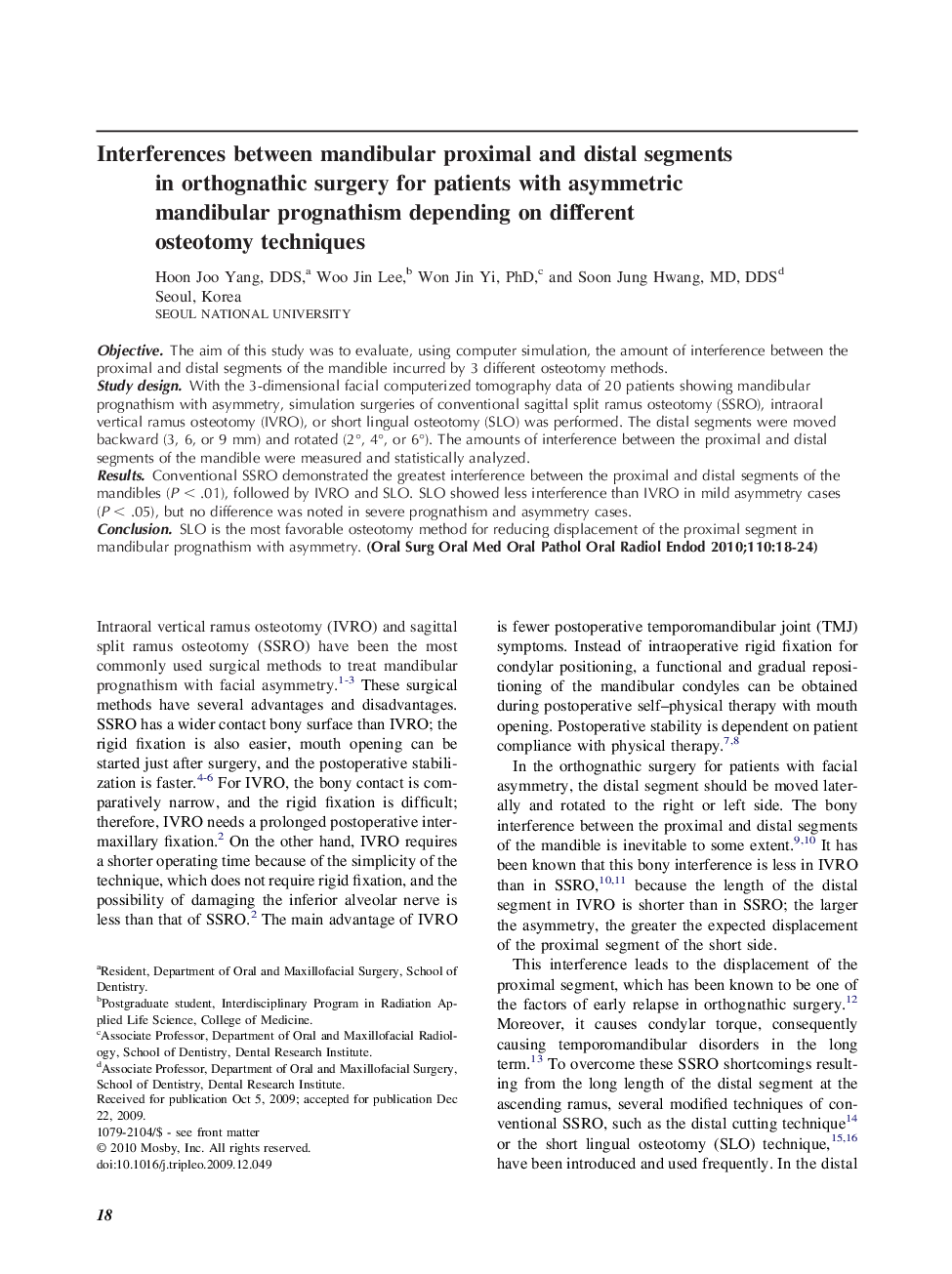| Article ID | Journal | Published Year | Pages | File Type |
|---|---|---|---|---|
| 3167542 | Oral Surgery, Oral Medicine, Oral Pathology, Oral Radiology, and Endodontology | 2010 | 7 Pages |
ObjectiveThe aim of this study was to evaluate, using computer simulation, the amount of interference between the proximal and distal segments of the mandible incurred by 3 different osteotomy methods.Study designWith the 3-dimensional facial computerized tomography data of 20 patients showing mandibular prognathism with asymmetry, simulation surgeries of conventional sagittal split ramus osteotomy (SSRO), intraoral vertical ramus osteotomy (IVRO), or short lingual osteotomy (SLO) was performed. The distal segments were moved backward (3, 6, or 9 mm) and rotated (2°, 4°, or 6°). The amounts of interference between the proximal and distal segments of the mandible were measured and statistically analyzed.ResultsConventional SSRO demonstrated the greatest interference between the proximal and distal segments of the mandibles (P < .01), followed by IVRO and SLO. SLO showed less interference than IVRO in mild asymmetry cases (P < .05), but no difference was noted in severe prognathism and asymmetry cases.ConclusionSLO is the most favorable osteotomy method for reducing displacement of the proximal segment in mandibular prognathism with asymmetry.
